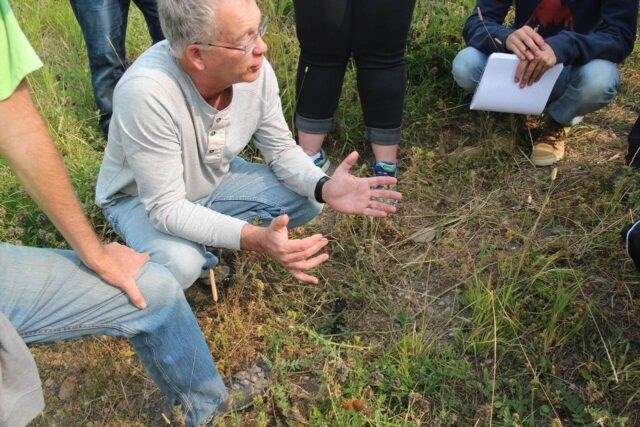There is far more to a cow pie than meets the eye.
Dr. Kevin Floate, an Agriculture and Agri-Food Canada scientist with the Lethbridge Research and Development Centre said, “I was hired specifically to work with insects associated with livestock.” His recent work saw the completion of the first comprehensive guide, Cow Patty Critters, which helps understand the “fecal friends” dwelling in dung pats and highlights their benefit to pasture ecosystems.
In his guide, Dr. Floate talks about pasture ecosystems, the benefits of dung-dwelling insects, and insights into animal health. His work provides a solid foundation for future studies in fields such as pasture ecosystems and veterinary medicine.
Intended to be a one-stop-shop guide, the work is comprehensive and is written in layman’s terms so a wider audience can benefit from it, as the guide has two parts: the first part answers general questions, and the second part focuses on how to identify insects.
In Canada alone, it is estimated that around 110 million dung pats are deposited by cows every day. The total weight is equivalent to just over 13,000 combines, and yet relatively little is known about the organisms that dwell within them.
Understanding the insect communities that inhabit these millions of dung pats is a crucial piece of the puzzle to understand a healthy pasture ecosystem.
“And you know,” he said, “with over 300 species of insects that breed in cattle dung in Canada, probably only four are considered to be pests. The rest are beneficial.”
When he started his work around 30 years ago, Dr. Floate was surprised by two facts: first, the sheer abundance of life within a simple dung pat, and second, that there was no existing comprehensive guide covering this.
Given this insight and inspired by a large number of questions directed toward him, Dr. Floate painstakingly assembled the guide which includes over 200 high quality images.
The benefits from his guide are numerous.
To maintain a healthy pasture ecosystem, knowledge of these insects and their comings and goings is crucial. Dr. Floate’s guide helps achieve this, and farmers can rely on the guide to improve soil and livestock health.
The guide expounds on the service helpful insects play, which ranges from aeration of the soil to spreading manure naturally, thereby removing potential breeding sites for pestiferous flies.
The guide also demonstrates how intricately connected the food chain is.
Feedback from crop and livestock producers who use the guide is welcomed by Dr. Floate and his intention is to write a follow-up edition to address any questions he receives after the first guide is published.
Dr. Floate wishes to inspire further research by farmers, ranchers, and students, and by offering the guide freely, he hopes to reach the widest audience possible. The information may be specific to the Canadian ecosystem, but in other areas where North American insects originated — such as throughout North America and Europe — the guide holds relevance.
For undergrad students, his guide contains over 500 references that can be used in their research.
"The critters found in cow patties provide valuable ecosystem services and are an unexpected ally to ranchers and farmers. This is the guide I wish I had when I started my career as a researcher,” said Dr. Floate. “If I have done my job right, readers from all backgrounds will find it informative, interesting and enjoyable.”
Dr. Floate received his Ph. D. in Zoology at the Northern Arizona University in 1992 and has received several awards in recognition of his work. His latest recognition is the ESC Service Award, Editor-in-Chief (2014-2017), in The Canadian Entomologist publication.
He co-founded the Dung Organism Toxicity Testing (DOTTS – SETAC) organization in 2002, worked at the University of Queensland (2004 - 2005), and was a scientific advisor for the European Medicines Agency (EMA) in 2018.
His interests include community insect ecology, participating in various entomological societies, identifying ground beetles (Coleoptera: Carabidae), and training students.
Dr. Floate welcomes feedback from anyone who has used the guide and will use these questions in a possible follow-up edition. He can be reached at [email protected].
To access the free comprehensive guide, you can download a .PDF copy on the Government of Canada website.




